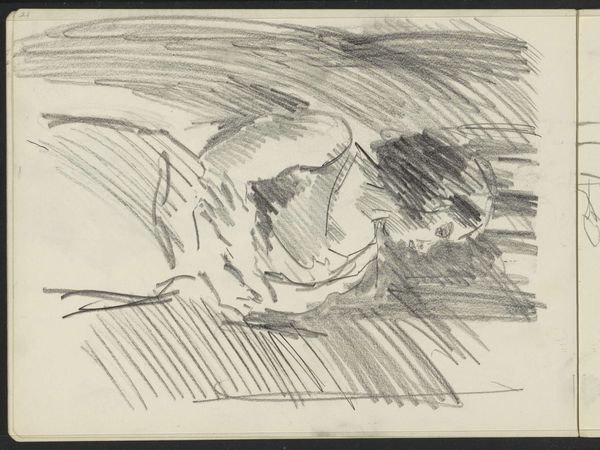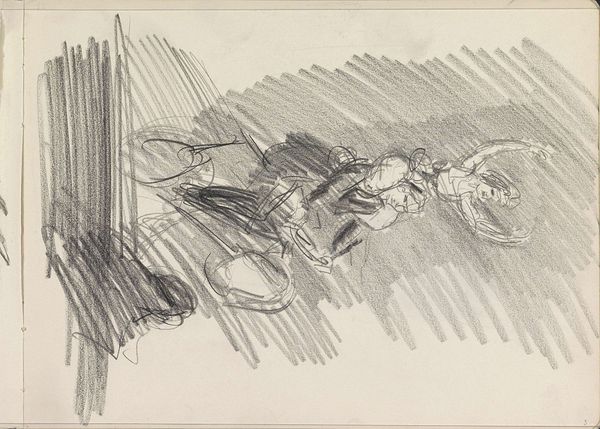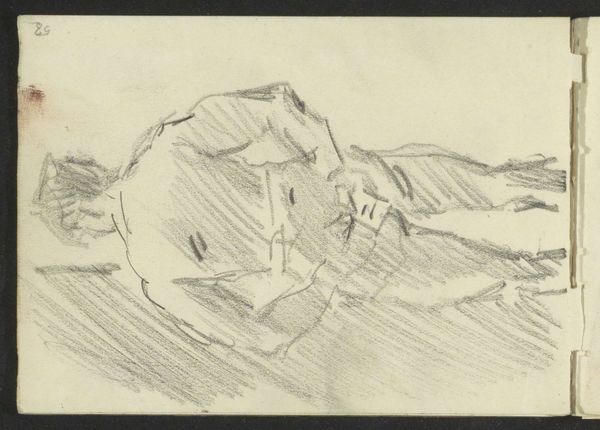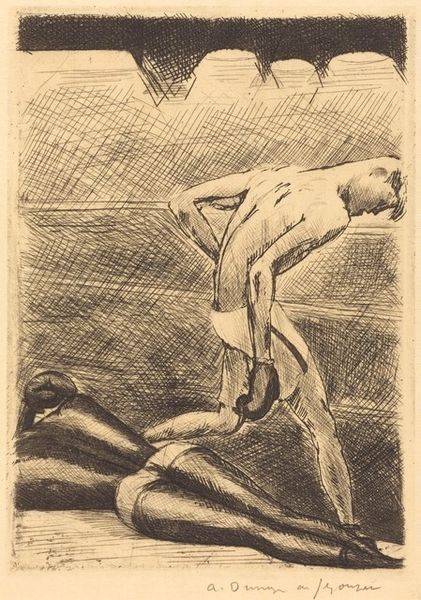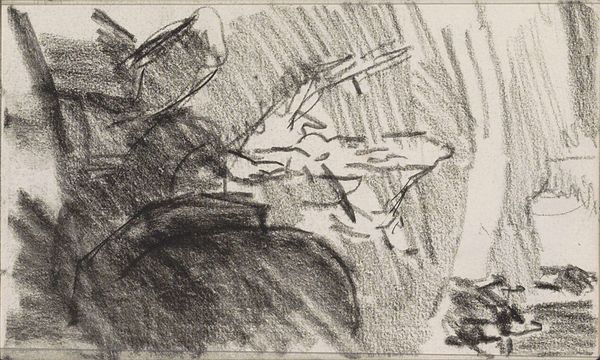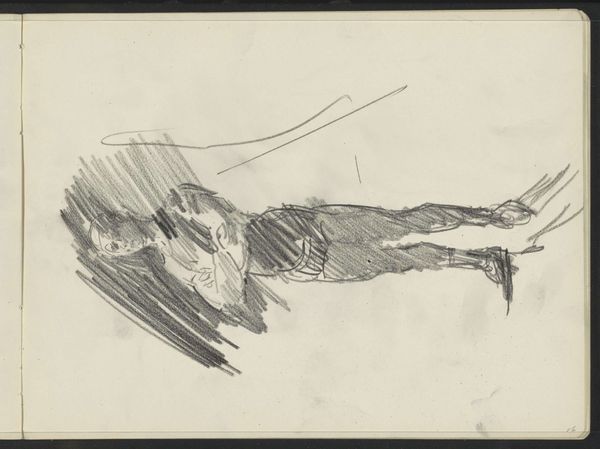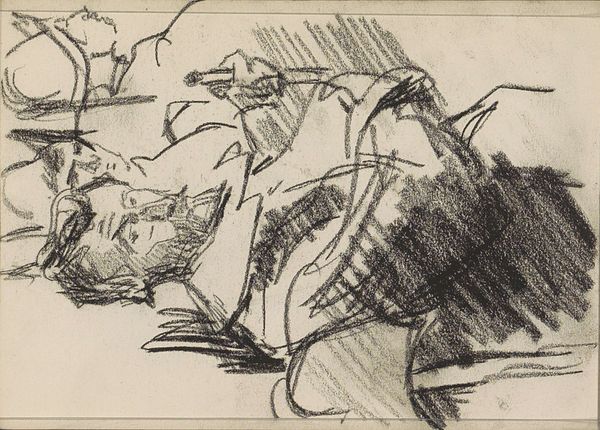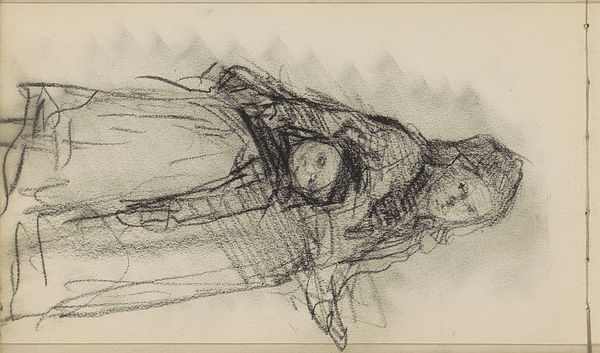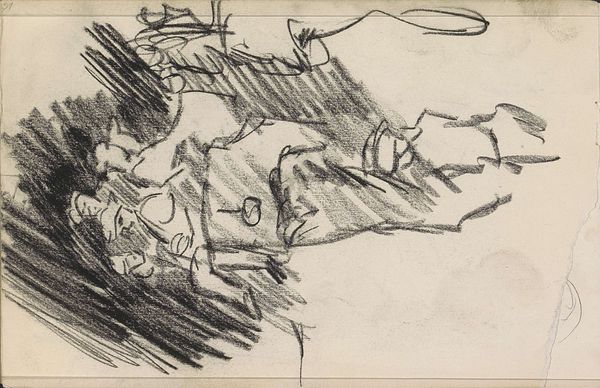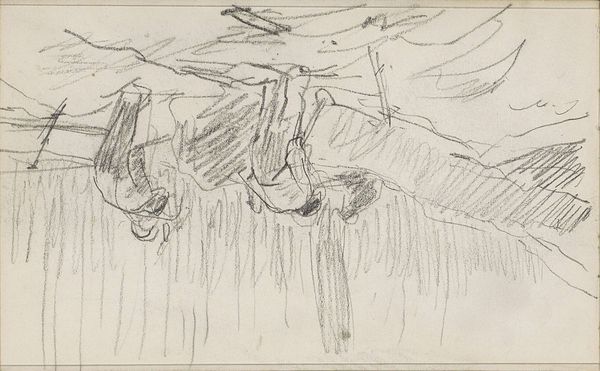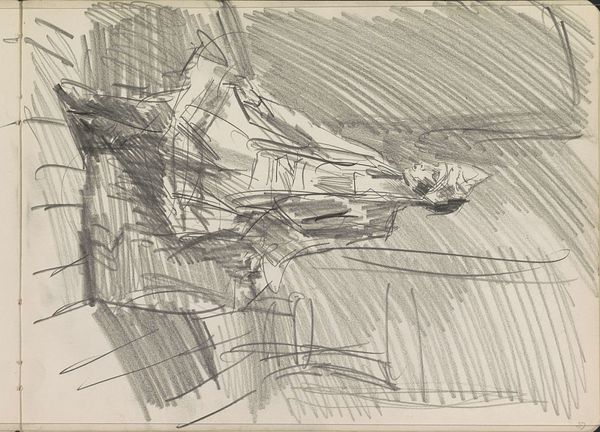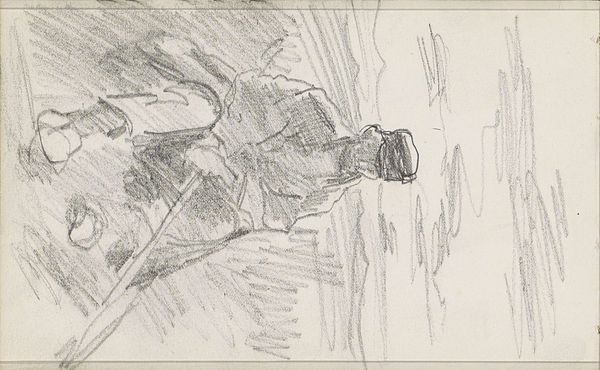
drawing, pencil
#
portrait
#
drawing
#
pencil sketch
#
figuration
#
pencil
#
realism
Copyright: Rijks Museum: Open Domain
Curator: Isaac Israels sketched "Two Acrobats" sometime between 1875 and 1934. What strikes you immediately about this pencil drawing? Editor: The sketch feels both ephemeral and grounded. There's a darkness to it, a real sense of the physical effort and vulnerability implied in such a performance, but somehow, also fragility due to its monochrome palette. Curator: Looking at the medium, I see that Israels chose pencil to capture these figures. Think of the cost involved in creating such works; drawing like this democratizes art production. Also, consider that Israels was part of the Amsterdam Impressionism movement; a reaction to academic tradition. It's visible in these broad, hurried marks. Editor: I’m fascinated by the linked hands. It's the symbolic crux of their performance. This speaks volumes of their shared vulnerability but also how we interpret partnership in our cultural symbology. Without that union, it’s not a circus act—it's just potential energy about to turn tragic. Curator: Absolutely, the stark realism focuses the viewer's gaze directly onto that point. Let’s consider the context; these acrobats aren’t idealized representations of physical prowess. They're laborers. The pencil drawing speaks of their actual labor. I consider the cultural consumption inherent in circus performances - they provided mass entertainment in the late 19th and early 20th centuries. Editor: Yes, the symbol of connectedness and interdependence in a dangerous setting speaks to human endeavor, risk, and even fragility beyond just mere entertainment, if that's what Israels intended at all. Curator: I appreciate your thoughts on symbolism and that this scene does suggest layers of potential interpretation. For me though, the drawing’s intrinsic value lies in how it elevates working class life using readily available materials and depicts common performers from a social vantage point. Editor: It certainly makes you appreciate the beauty, grit, and artistry present in something seemingly ordinary. Thanks for opening my eyes to these considerations. Curator: Likewise. There's such complex cultural and economic history here, laid bare.
Comments
No comments
Be the first to comment and join the conversation on the ultimate creative platform.

